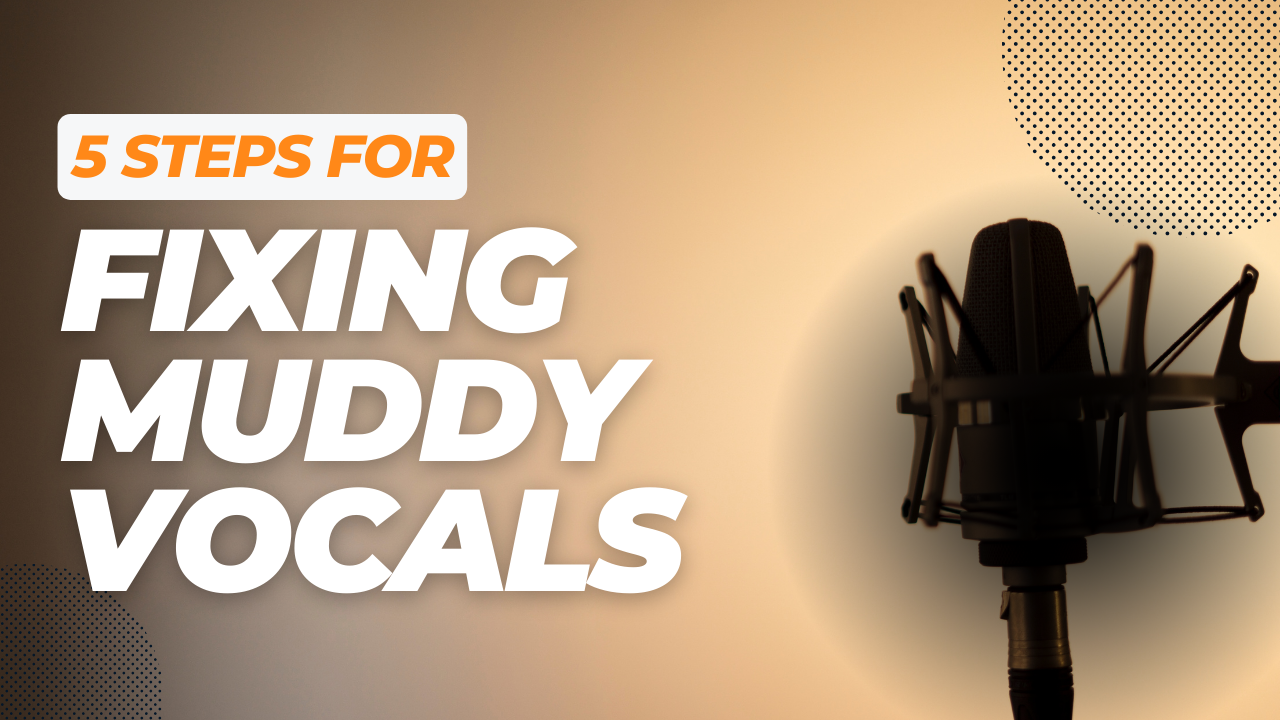How Do You Fix Muddy Vocals? Start With These 5 Steps
Muddy vocals are a constant struggle when you’re mixing music.
Since the vocal sound is such an important part of the mix, no wonder it keeps you up at night.
You want just the perfect-sounding EQ curve. Thickness and clarity without muddiness.
So here are 5 steps for dealing with muddy vocals when you’re mixing your next vocal production.
1. Filter the Bad Vocal Bass
Sometimes you don’t need to surgically cut out the lower mids to clear up the muddiness in the vocals. Sometimes you just need to get a little heavy-handed on the high-pass filter.
2. Get Rid of Nasally Vocals
If there’s one pet peeve I have with vocals, it’s the nasally sound caused by too much 1 kHz. But the weird thing is, you can’t always just cut the frequency to get rid of the nasal sound. Often times that creates a thin sound that’s exactly the opposite of what you want. And if you have too much low-mid buildup in your vocal, it will even harder to get that vocal on the right track, no pun intended.
3. Mask Your Muddy Vocals
When that nasally sound happens, masking is a good way to hide a certain sound. By boosting slightly above the frequency that’s causing problems you can often hide the sound you’re having trouble with.
4. Add Weight When it Makes Sense
Being scared of muddiness can also cause other problems. You might be avoiding certain frequency ranges because of their reputation for causing muddiness. But then you might end up with a thin sounding vocal. Don’t be scared to boost the vocals in the lower-mids if your singer is sounding a little thin. Sometimes that’s exactly what a vocal needs.
5. Increase the Presence of the Vocals
If you’re not having any problems with muddiness, but the vocal doesn’t seem to stand out, boosting the higher mids can sometimes save the sound. Subtractive EQ is great and all, but to smack some 5 kHz on there.
Fix Your Muddy Vocals
Too much low-mid build-up does cause muddiness in your vocals but it’s not always a matter of cutting a frequency and leaving it at that. The frequency spectrum is a complicated web of frequencies that all relate to each other.
Cutting one frequency has relative consequences to all the other ones. If you cut the low mids, the relative gain of the high mids is increased so carefully navigating the frequency range to get the best-sounding vocal sound is tricky.
Lucky for you, I’ve got just the thing. Your Ultimate EQ Guide goes over all the characteristics of each frequency range with dedicated guides to both drums, bass, guitars and vocals.
Image by: Jason Lander
Music Mixing








LEAVE A COMMENT